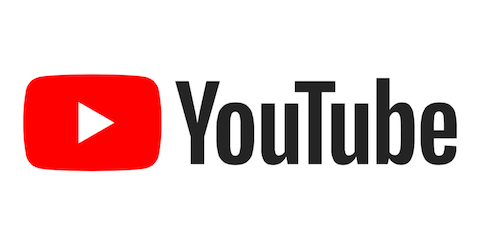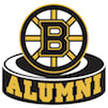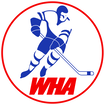|
Rick Vaive was the first 50-goal scorer in the history of the storied Toronto Maple leafs franchise – but his accomplishments are often overlooked because he played on some of the most pitiful teams in Leafs history. He’d be named captain at just 22-years old and would reel off three 50-goal seasons, but the Leafs were in shambles – and soon, Vaive’s career would be too. While he was winning battles on the ice, away from the arena he was no match for the demons that would hasten his exit from the NHL and haunt him long after his career was over. This is the story of Rick Vaive – his achievements, his struggles, and his road to redemption.
Rick Vaive was born in Ottawa, Ontario on May 14, 1959. His family later moved to Charlottetown, Prince Edward Island where he began his hockey journey.
With his hard shot, physical style and strong skating, Vaive caught the attention of junior hockey scouts’. He became a star the Quebec League’s Sherbrooke Castors and scored 76 goals and 155 points in 1977-78. That year the tough-minded right wing was also chosen to play for Team Canada in the 1978 World Junior championships. Vaive still had one more year of junior eligibility, but the World Hockey Association’s Birmingham Bulls were looking to stock their roster with inexpensive junior talent and thus the “Baby Bulls” were born. In addition to Vaive, the Bulls signed an all star teenage contingent that included future NHLers Craig Hartsburg, Michel Goulet, Rob Ramage, Pat Riggin, Gaston Gingras, and Keith Crowder. They'd each be paid $50,000 and be coached by lifelong minor league tough guy John Brophy. Vaive loved playing for the ultra old school Brophy and scored 26 goals while racking up numerous fighting majors en route to a WHA-leading 248 penalty minutes. He’d also receive some hard knocks along the way. In one notable game, Edmonton Oilers coach Glen Sather sent his enforcer Dave “Cement Head” Semenko after Rick. Semenko delivered a severe beating to Vaive, who had to be assisted off the ice. A few weeks later, Vaive would again be knocked senseless: this time courtesy of a well-placed elbow from 51-year old Gordie Howe. Hockey in the 70s was a different world, both on the ice and off. The Bulls were an odd combination of naive teenagers and aging veterans. Rick and the young Bulls learned early on that drinking was an expected part of being on a pro team and they began to indulge in the Bulls hard-partying ways. For the 19-year old Vaive, this daily drinking created a habit that would prove to be costly later in his life. As expected, the Birmingham Bulls folded with the WHA upon the expansion of 1979. In the deepest draft in NHL history, Vaive was chosen 5th overall by the Vancouver Canucks and was paid the standard NHL contract for that draft position – a total of $400,000 for three years plus an option year. At first, Vaive struggled to adjust to the pace of play in the NHL, which he considered to be much tougher than the WHA. An even bigger problem was that coach Harry Neale was convinced that Vaive was a heavy drinker and lacked discipline off the ice. Still, Vaive and the hockey world were shocked when in February 1980, he and the Canucks previous year’s #1 pick - Bill Derlago – were traded to the Toronto Maple Leafs in exchange for veterans Tiger Williams and Jerry Butler. The trade was part of a “Friends of Darryl Sittler” purge orchestrated by Leafs owner Harold Ballard and GM Punch Imlach that had begun a few weeks earlier with the trading of popular Lanny McDonald to the Colorado Rockies. Vaive got on track in Toronto and finished the season with 22 goals.
The 1980-81 season brought more tension, drama and awful play from the Leafs, who were saddled with sub par goaltending and a crew of undeveloped teenagers on defense. However Vaive notched 35 goals and his set up man, Derlago, added 33 so there was some hope heading into the 1981-82 season.
MEDIA Although Imlach was now gone, the 81-82 season was even more miserable for the Leafs franchise. In January, Harold Ballard’s personal crusade against Darryl Sittler finally came to an end when The Leafs captain was traded to the Philadelphia Flyers. The 22-year old Rick Vaive was then named the 20th captain in Maple Leafs history. Vaive felt unprepared for the captain’s role but enthusiastically accepted it. Although the Leafs would compile just 56 points, their new captain was hitting his stride. After breaking Frank Mahovich’s franchise record of 48 goals a few nights earlier, Vaive would become the first-ever Leaf to hit the 50-goal plateau on March 24, 1982. Vaive would end the season with 54 goals – a record that would stand until 2022 when it was finally eclipsed by Auson Matthews Heading into the 1982-83 season Vaive signed a new three-year contract valued at about $200,000 per year. Once again he produced – notching 51 goals – but the Leafs continued to lose, earning just 68 points. Meanwhile, the pressures of being the captain of a losing team in a hockey-obsessed market began to worsen some of Vaive’s deep-seeded anxieties .
In his recent book “Catch 22” Vaive recounts how five years into his career, he finally acknowledged his nearly paralyzing fear of flying. In order to make it through a flight he’d regularly consume at least a six pack of beer. His self-medicating was noticed — and not appreciated – by team management.
Vaive also conceded that his constant drinking on planes, hotels, bars, etc. began to affect his on ice performance. This was the NHL culture at the time - there was beer in the press box, lockerooms, everywhere. Vaive’s boozing may have been extreme, but he was hardly alone in his excess. In his book, Vaive writes: Hockey was my escape from the world, but not from drinking. Part of being a good captain means socializing with the team – bringing everyone together. But that meant that I was swept up in the party life that (helped to) undermine my career and my ability to be the disciplined player I needed to be to be a good captain and teammate.” Despite these issues and another last place finish, Vaive enjoyed his most productive season in 1983-84, compiling a career-high- 93 points. And for the third straight year he hit the half-century goal scoring mark. Vaive’s former teammate, hard-driving Dan Maloney, took over as the Leafs coach in 1984-85 but the Leafs would plummet to a league-worst 48 points on the season and Vaive – battling neck and shoulder injuries – saw his production drop to 35 goals. Vaive had a rocky relationship with the hot-tempered Maloney, himself a heavy drinker. The animosity between the two came to a head on February 22, 1986 on the day before a road game in Minnesota. The night before Vaive had stayed out late drinking with former teammate John Anderson, who had since been traded to Quebec and was also in Minnesota after a game there. Maloney had called a 7:15 AM practice the next day, but the hungover Vaive overslept and missed that practice. Late that morning an irate Maloney pounded on Vaive’s hotel room door and informed him that he was no longer captain of the team. Vaive took full responsibility for his actions and dealt with the public humiliation as best he could. Despite the controversy and a broken wrist, he remained productive and scored 33 goals in just 61 games. He added six more goals in nine playoff games. The Leafs finished the 1985-86 season with just 57 points, but qualified for the last playoff spot in a very weak Norris Division. They’d go on to upset the 1st place Chicago Blackhawks in round one and push the St. Louis Blues to seven games before losing in round 2.
The following year Vaive’s first pro coach – John Brophy – took the helm of the team after serving as Maloney’s assistant the previous two years. Bolstered by teenager Wendel Clark and a group of younger players, the revamped Leafs squeaked into the playoffs and, again, came within a game of making the conference finals.
The Leafs franchise seemed to be on the upswing but would again crash and burn in 1987-88. Luckily for Vaive he missed that disaster as, prior to the season, he was traded to the Chicago Blackhawks along with Steve Thomas for Al Secord and Eddie Olzyk. The deal revitalized Rick as he scored 43 goals, playing on a line with Denis Savard and Steve Larmer. After the 87-88 season, Vaive to the Hawks to arbitration and secured a three -year contract valued at about $335,000 per year. But, Mike Keenan took over as Blackhawks coach in 1988 and He had little use for Vaive, once referring to him as an F-ing floater. Vaive was soon sent packing to the Buffalo Sabres for Adam Creighton. He proved he could still play by scoring 19 goals in 28 games with the Sabres to finish with another 30-goal season. Vaive was suffering through persistent injuries and had two more decent seasons in Buffalo. But when John Muckler took over as coach for the 1991-92 season, Vaive was banished to the bench. Angry and depressed at his plight, Vaive began to drink even more than usual and was finally shipped out to the AHL Rochester Americans. At season’s end, the Sabres bought out the remaining year of his contract for $220,000.
Vaive had hoped to be chosen in the 1992 NHL expansion draft but was ignored by both Tampa and Ottawa.
In 1992-93, He labored through an injury plagued season as a player-coach with the AHL Hamilton Canucks. By mid-season, Vaive knew his dream of returning to the NHL was dead.. In Catch 22, Vaive recalls the end of his career this way “It was an ugly ending. I was 33-years old and it was over … it’s not how you want to leave. It sucks.” Vaive was headed for a very dark place in life, but got a break when– thanks to a recommendation from Brophy – he secured a head coach role with the South Carolina Stingrays of the ECHL. Vaive did an outstanding job in Charleston putting together strong teams for five years and winning the ECHL championship in 1997. He also hit a personal milestone after his first year with the Stingrays. After blacking out drunk at a team party, the 35-year old Vaive swore off alcohol cold turkey and he says he remained sober for the next 15 years. Vaive moved to the AHL to take the helm of the St. John’s Flames in 1998 but the management of the parent club in Calgary was in disarray and Vaive received little support. For example, he advocated heavily for two of his players – Martin St. Louis and J.S. Giguere – but was ignored … and both players were discarded to become legends with other teams.
Vaive was unexpectedly fired at the end of the 1999 season. But he wasn’t informed until July 17 – well after every other job opening had been filled.
With the 2000-2001 season looming, he accepted a head coaching position with the Mississauga ice Dogs of the Ontario Hockey League. The team was part owned by Don Cherry and featured Jason Spezza. Unfortunately for Rick the inept Ice Dogs franchise made the dog days of Harold Ballard’s Maple Leafs look like paradise. Early in the season Spezza and his agent Bobby Orr forced a trade from Mississauga. After every loss, the meddling Cherry berated Vaive – but always by voicemail. The Ice Dogs would finish the season with a record of 3-56-7-2, which included a 33-game losing streak. If that weren't bad enough, Vaive’s house in Oakville burned down on Halloween night. Cherry fired Vaive at season’s end. The disaster in Mississauga effectively ended Vaive’s coaching career. Nobody would even interview him after that. Things would get worse for Vaive in 2008. Attending the wake of his father in law, he and his brother-in-law – former NHL player Bob Stewart – toasted the departed with a shot of scotch. Vaive’s sobriety was over, his alcohol issues accelerated and his life would soon crumble. Outwardly, Vaive seemed to be doing well working with Leafs TV, making numerous charity appearances and coaching minor hockey. But, on July 14, 2009 everything changed. After a day of drinking at a golf outing, he was busted for Driving under the influence. Saddled with the DUI charge, Vaive became unemployable – appearances, golf tournaments, TV jobs – they all disappeared. While awaiting his trial, Vaive was named head coach of a minor midget hockey team. But one night, he passed out drunk, missed a game and was fired. Vaive has finally hit rock bottom and – with the support of the NHL Players Assistance Fund – checked himself into a rehab center. This proved to be successful … and then on April 12, 2012 under the glare of the Toronto media he was cleared of the DUI charge. Always a family man, Vaive is now a proud grandfather and claims to be sober to this day. He remains active with the NHL Alumni and the leafs alumni, supporting a number of Ontario charities. As hockey player, Vaive’s legacy is that of one of the Leafs All-time greats – but one whose best years were overshadowed by a dysfunctional franchise and curtailed by a crippling addiction. On October 15, 2016, the Toronto Maple Leafs celebrated their 100th anniversary and righted a longtime wrong by retiring 19 fabled Leafs jersey #s in a stirring ceremony in Toronto. The number 22 was not among them.
0 Comments
Leave a Reply. |
Archives
March 2023
Categories
All
|
Welcome to the Pro Hockey Alumni Podcast






 RSS Feed
RSS Feed
